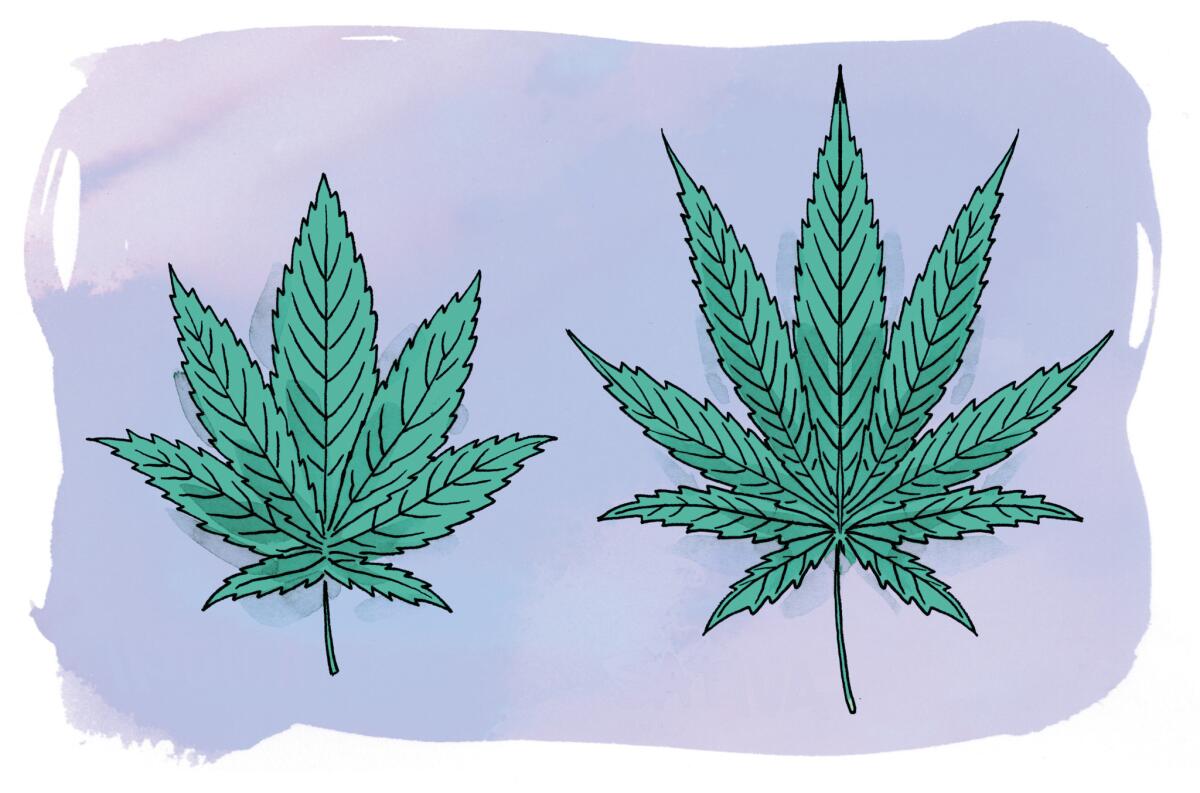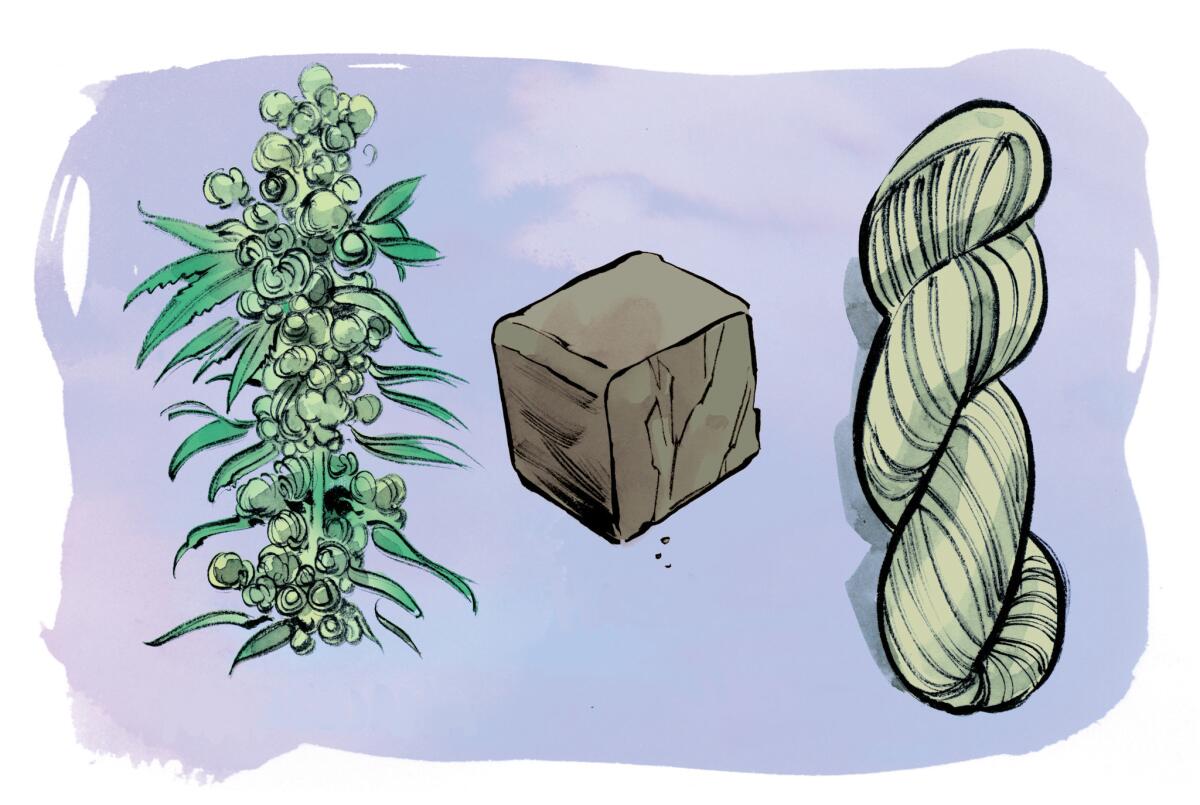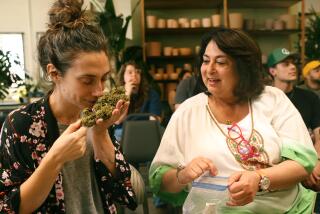Sativa or indica? CBD or THC? What to know before cooking with cannabis

Don’t know the difference between MSG and THC? Here’s a guide to the terminology you may encounter.
Sativa versus indica versus hybrid
Cannabis sativa and cannabis indica are two of the three species of cannabis. (The third species, cannabis ruderalis, is less attractive due to its smaller stature and low concentration of THC.)
Sativa is a warm-weather species characterized by tall plants and thin leaves. The plant takes 10 to 15 weeks to mature and is known for a cerebral, energetic and invigorating high that’s particularly suited for daytime use. Medically, it can be used to help people with depression and chronic pain.
Indica is a colder-weather species with short, dense plants and dark, broad leaves. It takes six to eight weeks to mature — a shorter time than sativa — and typically has a greater yield. Indica is generally known for its relaxing high — think hanging-out-on-the-couch vibes — and medically, it can help those with nausea, anxiety and acute pain.
A hybrid is a cross between two different species of cannabis, usually sativa and indica. This allows for two or more particular traits to be selected and bred for, and it accounts for much of the diversity of options at a dispensary.
Note: When deciding between sativa, indica or a hybrid, it’s worth talking to an expert about the kind of high you’re looking for; things like dosage, tolerance, consumption method, and the specific plant’s chemical profile can have more of an effect on your experience.
THC versus CBD
THC and CBD are both cannabinoids, two of the hundred-plus known chemical compounds in cannabis. They act on the cannabinoid receptors in our bodies, which are found mostly in the brain and throughout our nervous and immune systems.
THC, or tetrahydrocannabinol, is the cannabinoid that takes up the most volume in a given strain of marijuana. It’s the stuff that makes us feel high; it’s the chemical compound that has the primary psychoactive effect on the human body. For us to feel the effects of THC, it must go through a process called decarboxylation, which most often is accomplished through the application of heat — via smoking or vaping or, in the kitchen, through cooking the cannabis.
CBD, or cannabidiol, is a non-psychoactive cannabinoid that accounts for the second-highest volume in cannabis (after THC). It doesn’t make us feel high and instead works to alleviate things such as anxiety, inflammation, and pain perception.
Depending on the type of high you’re looking for, you can opt for strains of marijuana with higher or lower levels of THC or CBD — or, if you’re looking for a high-less experience, you can opt for any number of CBD-only products on the market.
Marijuana versus hash versus hemp

You may have seen these terms thrown around in the conversations around cannabis, but they refer to very different things.
Marijuana is the word used to refer to the female cannabis plant and its flowers (or buds, colloquially). (Male plants don’t produce flowers and are therefore not usable in the cannabis-as-drug sense.) The word comes from the Mexican term for cannabis, which was originally spelled marihuana.
Hash, short for the Arabic term hashish, is a substance made from the THC-rich resin, or trichomes, of the female cannabis plant. The resin is compressed into a concentrate that can vary in textures (hard, soft, creamy, sticky) and colors (blond, brown, red, green). It’s stronger than marijuana and can be smoked out of a pipe, rolled into a joint or spliff, or used in food.
Hemp is a fibrous product made from male cannabis sativa plants and used in the manufacturing of more than 25,000 products — things such as rope, paper, fuel, beauty products and construction materials. It’s also used as a food source; you may see hemp seeds, hemp milk, hemp-seed oil or hemp tea at your local health-food store. Although it is not a drug, hemp production was banned for many years in the United States; only recently have a number of states started enacting legislation to begin engaging in industrial hemp research and pilot programs.
More to Read
Eat your way across L.A.
Get our weekly Tasting Notes newsletter for reviews, news and more.
You may occasionally receive promotional content from the Los Angeles Times.










